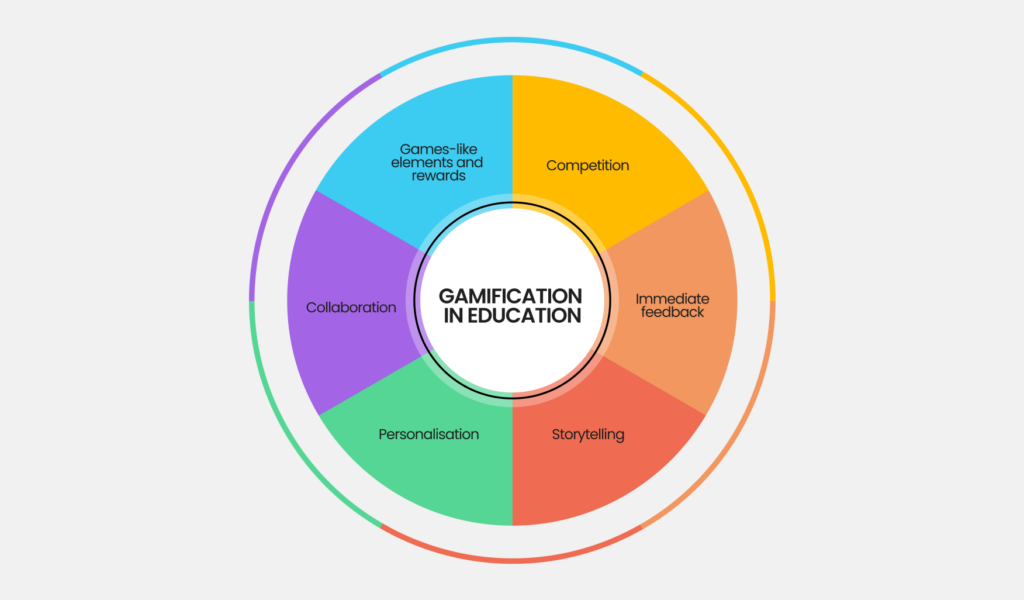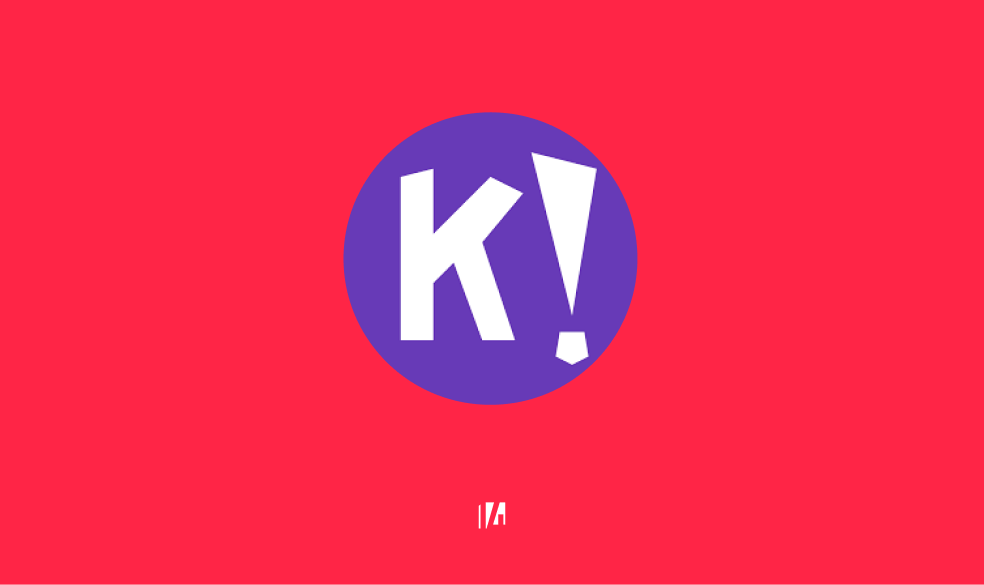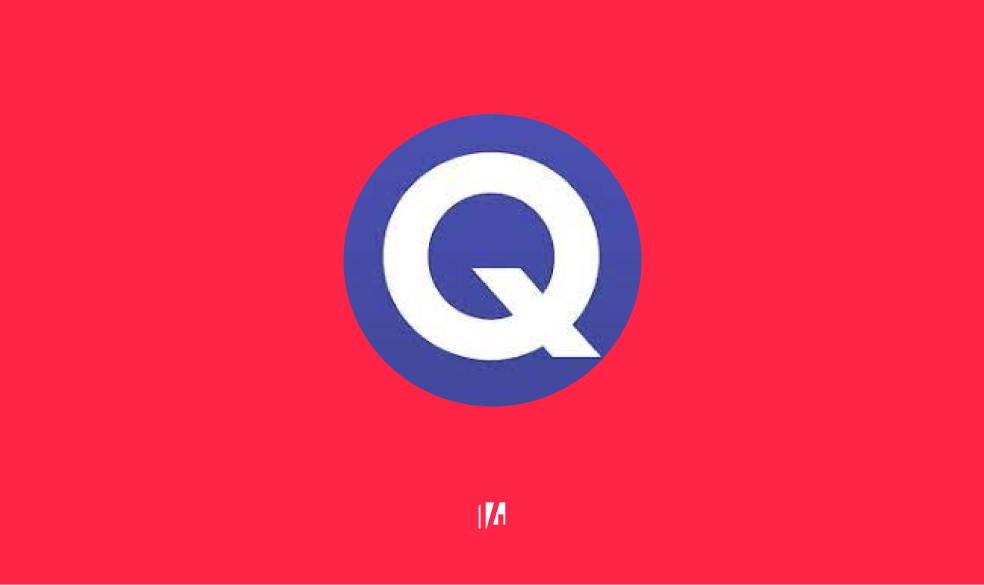Education
Education has come far from traditional classroom settings and one-size-fits-all teaching methods. With the advancement of technology, educators have been equipped with tools and techniques to improve the learning experience for students. One popular strategy is gamification; the integration of game elements into non-game contexts, particularly in education.
When combined with mobile apps, gamification in education can transform how students engage with their learning material. In this article, we’ll examine the wonders of adopting games in education, highlighting how apps transform classrooms into engaging, interactive spaces for learning for students of all levels.
What is Gamification in Education?
Gamification in education involves using game-like elements and principles, such as points, rewards, competition, and challenges, to engage and motivate students to achieve specific goals in their learning process.

Gamification is not just about playing games in the classroom; it’s a strategic approach to incorporate game elements into the learning process, making learning more enjoyable and effective.
By implementing game mechanics like points, challenges, leaderboards, badges, and engaging storytelling into educational apps, educators and educational institutions can make the learning process for students motivating, engaging, interactive, and rewarding.
Key components of gamification in education include:
- Game-like elements and rewards: These include points, badges, leaderboards, levels, and virtual rewards. These elements provide a sense of achievement and progression for students as they complete tasks and progress in their learning.
- Competition: Healthy competition can be introduced through challenges and quests with clearly defined objectives and tasks, motivating students to excel and compare their performance.
- Immediate feedback: Gamification often provides instant feedback on a student’s performance, helping them understand where they went wrong and how to improve.
- Personalisation: Using game elements can allow for personalised learning paths and content tailored to each student’s needs and abilities.
- Storytelling: By incorporating narrative elements into educational activities, educators can make the learning experience more engaging and relatable.
- Collaboration: This is also a gamified educational approach that encourages student collaboration, promoting teamwork and social interaction.
Gamification is not limited to traditional classroom settings and can also be applied in online courses, e-learning platforms, and self-paced learning. Using game-like elements is a way to increase students’ motivation, engagement, and retention, as well as to make learning more enjoyable.
What are the Benefits of using Games in Education?
There are several benefits to incorporating gamification into educational settings. These benefits include:
- Increased retention: Gamification not only enhances the learning experience but also increases information retention. When students are engaged and motivated, they are more likely to remember what they’ve learned.
- Improved academic performance: Games elements have been shown to improve academic performance, as students willingly invest time and effort into their studies, leading to better results. An excellent example of this is Duolingo. Duolingo is a popular language-learning platform and mobile app that offers courses in over 40 languages. Duolingo also provides a gamified and interactive approach to language learning, making it engaging and accessible to people of all ages and backgrounds.
- Data-driven insights: Incorporating games into learning platforms provides educators and educational institutions with data and analytics that help them understand student performance. This data can inform instructional decisions and strategies for enhancing the learning experience.
- Enhanced engagement: One of the most significant advantages of gamification in education is its ability to boost student engagement. Educational apps with gamified elements can catch the attention of students; encouraging them to participate in the learning process actively. When students are immersed in a gamified app, they are more likely to retain information and stay motivated throughout their educational journey.
- Personalised learning: Gamified apps can adapt to a student’s learning needs and the progress of each student. With features like varying difficulty levels, these apps can provide a personalised learning experience. Students can progress at their own pace, ensuring they grasp the material before moving on to more advanced concepts.
- Real-world application: Gamified educational apps bridge the gap between theoretical knowledge and practical application. They often include simulations, case studies and interactive exercises that mimic real-world scenarios, preparing students for future careers.
What Platforms adopt Games Elements?
Explained below are examples of mobile gamification apps and websites that adopt gamification in education, providing educators and educational institutions with practical tools to enhance the learning experience.
- Duolingo (Mobile app): Language learning made fun
Duolingo is a popular gamified language-learning app that combines gamification elements, including points, levels, and rewards, to make learning a new language an engaging and enjoyable experience.

On the app, students of all ages and educational backgrounds complete lessons and exercises, earning points and virtual currency. They can compete with friends, unlock new levels, and receive immediate feedback. It is important to note that Duolingo’s gamified approach has proven effective. Students enjoy the interactive nature of the app, and research indicates that it’s as effective as traditional language instruction.
- Kahoot! (Mobile app & Website): Interactive quizzing
Kahoot! is a platform that allows educators to create and share quizzes with multiple choices, and has gained popularity for its engaging and competitive atmosphere.

It’s widely used in both classroom and remote learning settings. Kahoot! increases student engagement, knowledge retention, and participation. It transforms traditional assessments into exciting challenges.
- Quizlet (Mobile app & Website): Learning through flashcards and quizzes
Quizlet offers flashcards and quizzes with a competitive twist. On the mobile app, educators and students can create flashcards and quizzes.

Users can study and test themselves on various topics, earning points and tracking their progress. Quizlet gamifies the learning process by making it competitive and self-paced. It enhances memory retention and helps students prepare for exams effectively.
- Epic! (Mobile app & Website): Reading and learning adventure
Epic! is an e-library that offers thousands of books and educational materials for children. It incorporates gamification to encourage a love for reading and learning.

Students can explore a vast collection of books and educational content. They earn badges and rewards for reading and completing quizzes. Epic! promotes literacy by making reading an interactive adventure. It also provides educators with tools to track and assess students’ reading progress.
- Classcraft (Website): Classroom management and learning adventure
Classcraft turns classroom management into a gamified experience. It promotes positive behaviour and teamwork among students.

Educators assign students roles, like warriors or mages, and award or deduct points based on behaviour. Students work together to achieve common goals. Classcraft creates a cooperative classroom environment, improves student behaviour, and enhances overall engagement in the learning process.
As technology continues to advance, the potential for gamification in education is limitless. With virtual reality, augmented reality and artificial intelligence, educators can create even more personalised learning experiences. By implementing games in education, educators and educational institutions would foster student motivation and overall improve learning processes.
However, educators can’t do these alone. Work with experts at Studio14 who are skilled in website and mobile development to ease the process. So send an email to daniel@studio14online.uk and let’s level up your approach to education and make learning an adventure that your students will never forget.